OUR ENVIRONMENTAL PROJECT
Restoration of wetlands
As part of our environmental project, we restored 3 ancient wetlands that several centuries of agricultural practices had dried up :
- 6,000 m2 floodplain meadow,(64583 square feet)
- a reservoir of 4,500 m2 (48438 square feet)
- a phyto-purification zone of 450 m2, (4844 square feet)
The Floodplain, a permanent metamorphosis of the environment
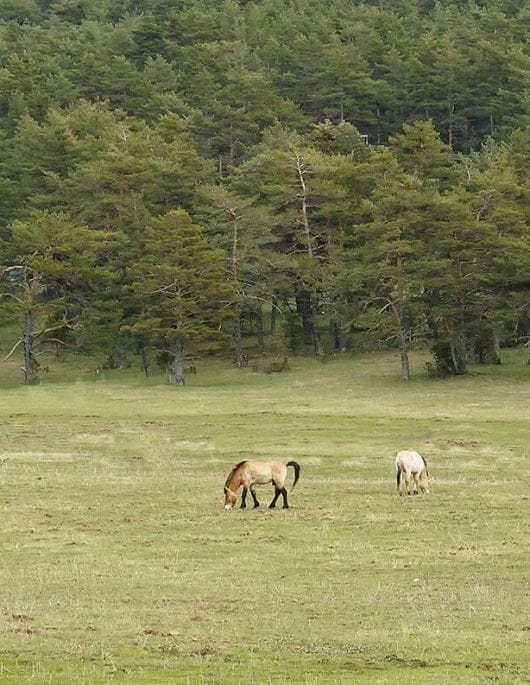
Before…
In this photo taken in 2009, we hypothesize old contours of dry swamp. Some work restored the flow of the original creek. The dry meadow has given way to a flooded plain for watering and bathing animals.
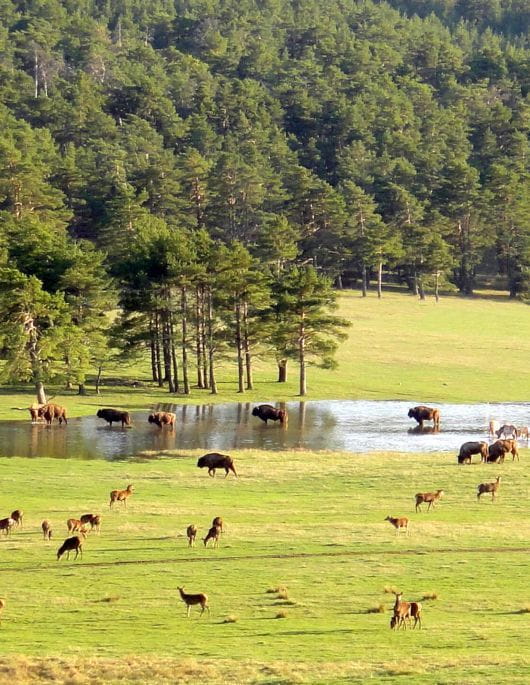
After…
As in Africa, the large ungulates, by their trampling, cause a continuous change of the course of banks, favoring the appearance of vast permanent wet basins, rich in aquatic vegetation consumed by bison, deer and much more recently wild horses.
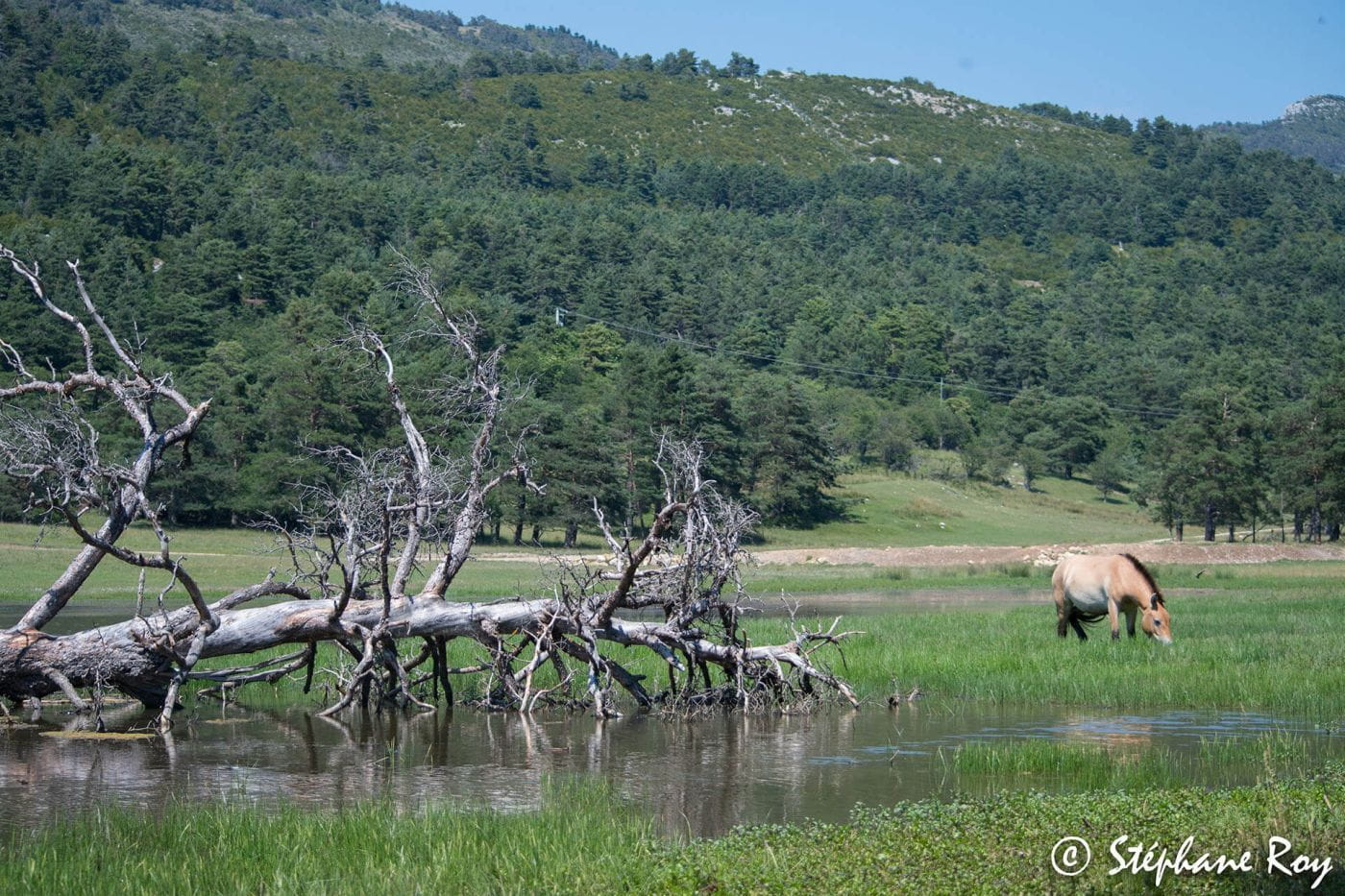
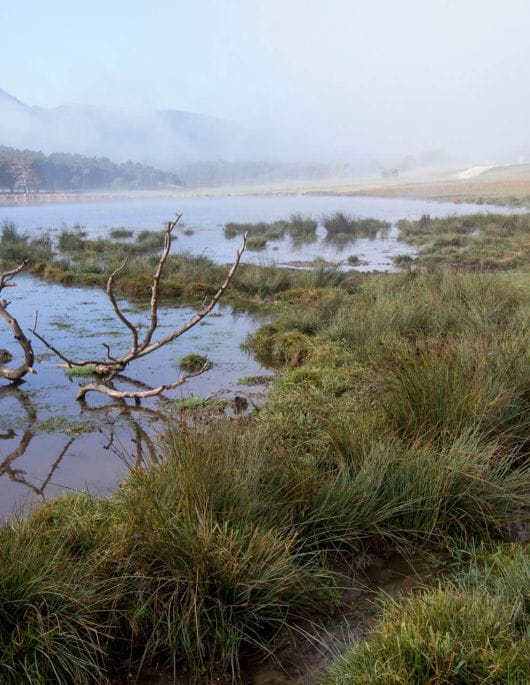
The reservoir
a 4-star hotel for aquatic biodiversity
Construction, in 2015, of a dyke embankment blocking a small valley has created an entirely overflowing lake, reserved for the aquatic bird. Which has a quiet zone for nesting. There is a remarkable aquatic biodiversity, both in birds and plants.
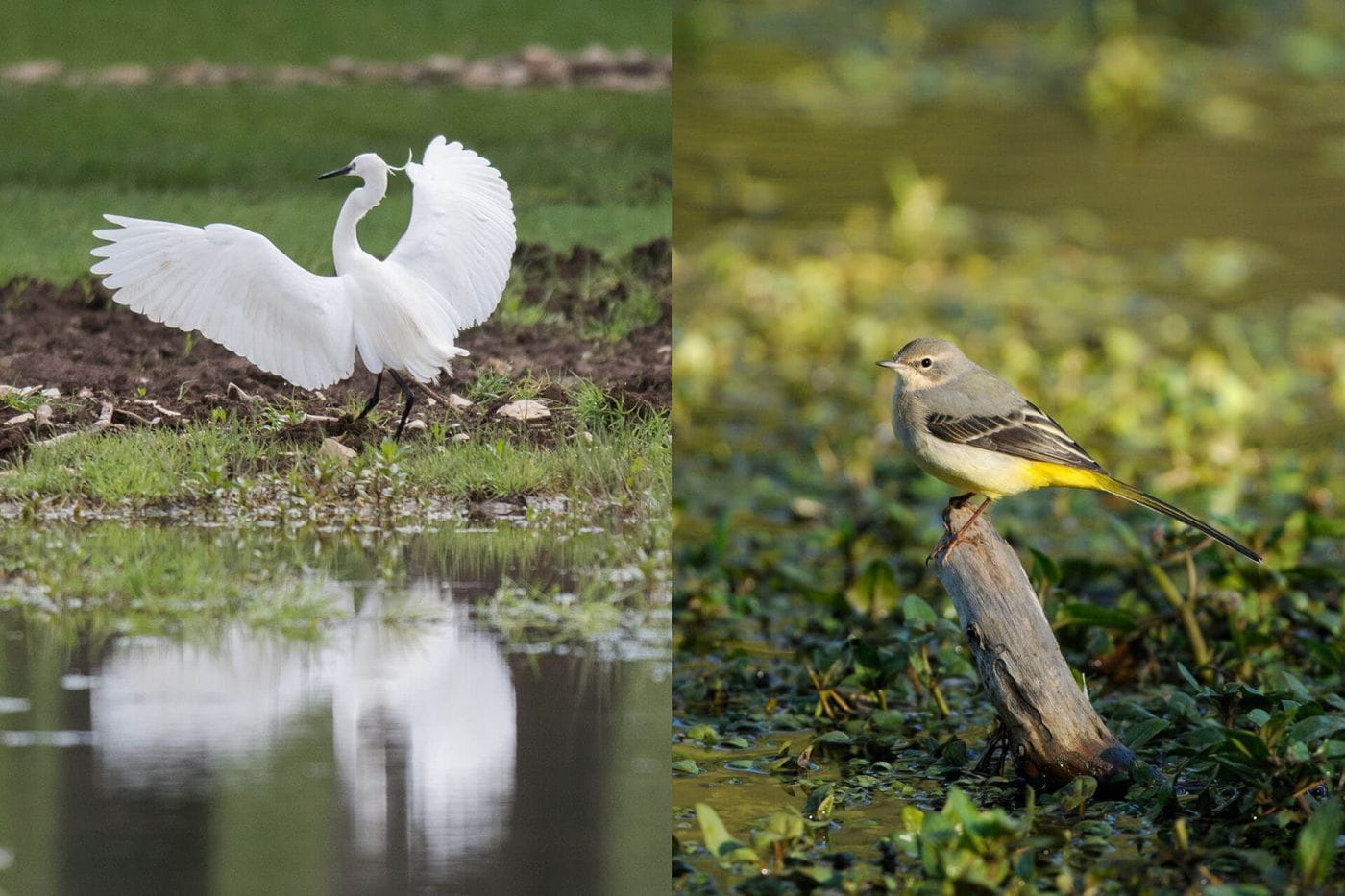
More than 350 aquatic plants including phragmites, typha, iris … were planted to function as :
- bank consolidation,
- phyto-purification of the water of the lake,
- constitution of nesting places for small species such as Little Grebe, or reproduction of insects including many dragonflies (Anax emperor, depressed dragonfly …)
These plants are divided into 3 categories:
- filtering: chayiers, bulrushes, phragmites, swamp bulrush, laiche,
- oxygenating: mint, potamot …
- melliferous: loosestrife, veronica streams, dyers’ lily, for nectarivores.
In addition to these 350 plants, it is necessary to add 125 trees and shrubs including willows (phytopuration and bank fixation), birch, alder and hazel, mountain ash and alisier for the reception and feeding of sedentary or migratory birds.
A resort for many birds, including migratory species …
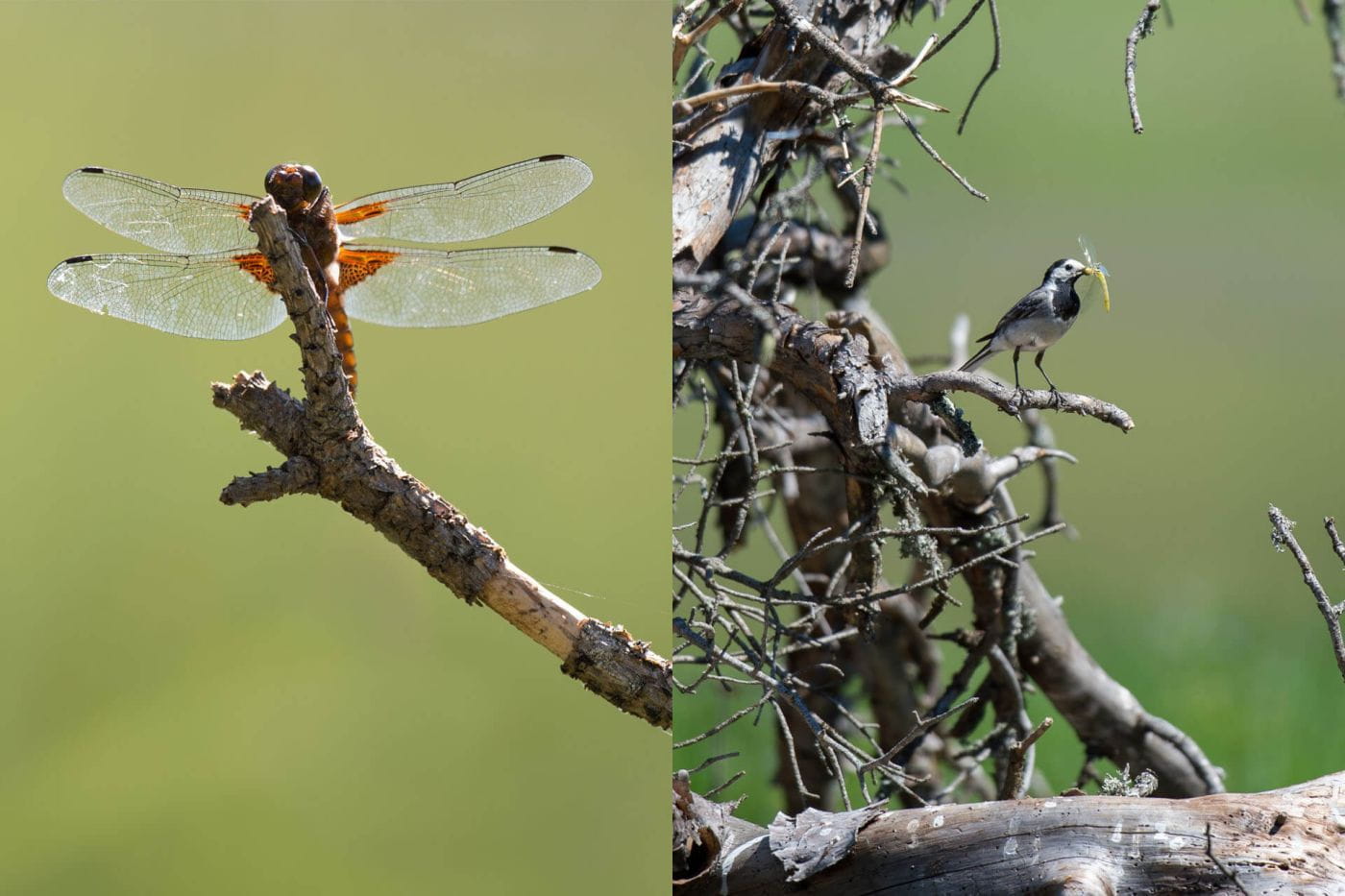
And quiet space for insects including dragonflies and damsels … More than 70 species fly over the lake!